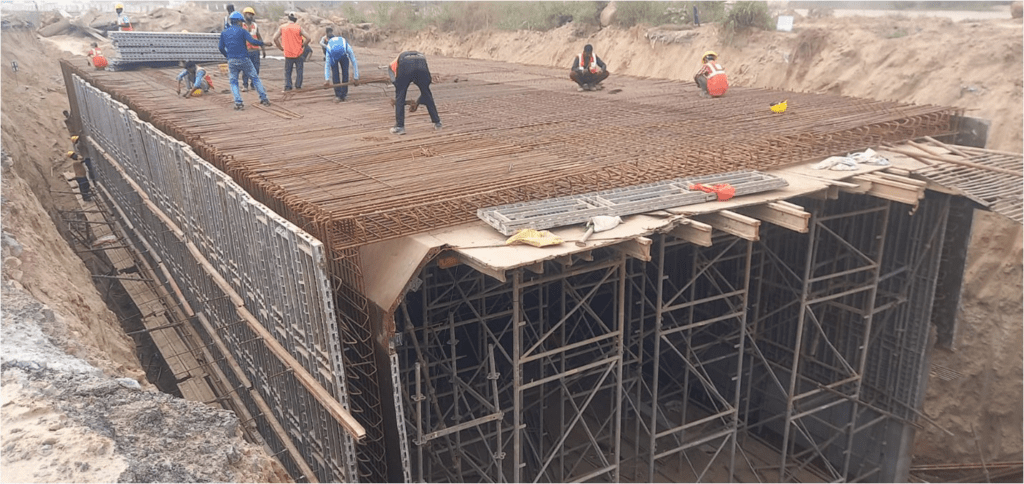The Advantages of Plastic Formworks in Designing Durable and Resilient Real Estate Structures
The landscape of construction is constantly evolving, with advancements in materials and methods leading to more efficient and enduring structures. One such innovation that is making waves is the use of plastic formwork. For any building, a solid foundation is paramount. Formwork, the unseen framework that shapes concrete, plays a crucial role in this unseen strength. Choosing the correct formwork can significantly improve the quality and longevity of the completed construction.
Plastic formworks have gained significant traction in recent years, offering several advantages over traditional methods. Let’s explore how these benefits outweigh any potential drawbacks.

What are Formworks?
Formworks are essentially temporary molds used in construction projects. They are typically used for shaping and supporting concrete as it cures. Imagine them as the invisible shells that hold the wet concrete in place until it hardens and becomes strong enough to stand on its own.
Formworks are the backbone of concrete construction, quietly contributing to safety, precision, and budget control throughout the building process.
Safety, Precision, and Affordability
In the world of construction, safety is paramount. This is where plastic formwork shines. Unlike traditional wood or steel options, plastic formwork offers a strong, lightweight mold that effectively contains the weight of freshly poured concrete. This eliminates the risk of unplanned spills or collapses, which can have devastating consequences for workers on the site. Imagine a high-rise building under construction.
Traditionally, heavy wooden or steel formwork would be used to shape the concrete floors. With plastic formwork, not only is the weight on the lower floors significantly reduced, but the interlocking panels create a secure mold, minimizing the chance of concrete leaks or unexpected structural failures.
This translates to a safer work environ-ment for everyone involved in the construction process, from the concrete pourers to the ironworkers and carpenters. This allows them to focus on their tasks with the peace of mind that the formwork will hold its shape, ensuring the project progresses smoothly and safely.
Traditional formwork materials, such as wood, might bend or break, resulting in irregularities in the finished concrete form. However, plastic formworks provide a major advantage in terms of precision. Plastic formworks, which are made of high-strength polymers, maintain their shape during the pouring process, ensuring that the concrete cures exactly as intended. This results in a smoother, more consistent finished product that requires minimal rework.
When it comes to designing durable and resilient real estate constructions, plastic formworks provide a significant cost advantage. Efficient formwork methods have a substantial impact on project timeframes. Faster installation, take-down, and overall construction speeds lead to lower labour costs. Furthermore, the reusable nature of plastic formworks, as opposed to traditional materials such as timber, minimises waste and material costs. These criteria, when combined, help to keep the overall project under budget.
The Pros of Plastic Formwork
Plastic formworks are a popular choice in construction due to several advantages they offer over traditional methods:
In the realm of construction, plastic formworks have emerged as a compelling alternative to traditional methods, bringing forth a wave of advantages that contribute to the design of durable and resilient real estate structures. Firstly, plastic formworks boast a significant weight reduction compared to their wood and metal counterparts. This translates to a much easier time on the job site, with less manpower required for transportation, handling, and installation. This streamlined process translates directly to cost savings through reduced labor hours.
Furthermore, plastic formworks shine in their reusability. Unlike single-use wooden formworks, which add to construction waste, plastic systems can be effectively used on several projects. This increases their lifespan significantly, reduces environmental effect, and lowers overall material costs for contractors. Plastic formworks contribute signifi-cantly to the development of long-lasting and stable real estate constructions by embracing these benefits.

In the construction industry, ensuring the durability of structures is paramount. Traditional formwork materials like wood can be susceptible to moisture, leading to rot, warping, and a compro-mised final product. Plastic formworks offer a significant improvement in this regard. Their inherent resistance to water, chemicals, and extreme temperatures allows them to maintain their shape during concrete pouring. This results in a smooth, high-quality concrete surface that enhances the overall strength and endurance of the real estate construction. Unlike wood, which requires frequent replacement due to decay, plastic formworks are extremely durable, resulting in long-lasting and sturdy structures.
Then comes another factor reflecting the biggest use of plastic formwork – Flexibility. Unlike traditional steel or timber formworks, plastic formworks provide unrivaled design versatility. The special characteristics of modular plastic formworks are that they can be custo-mised as per the requirement and shaped to almost any size or configuration necessary for the project.
To Sum It Up
Finally, plastic formworks represent a significant advancement in the construction industry.
Plastic formwork has emerged as a revolutionary advancement in the construction industry. Their modest effect shapes not only the current project but the entire future of real estate development. By promoting durability, efficiency, and sustainability, plastic formworks pave the way for a future where resilience and responsibility go hand in hand.
NOVA Formworks
Web : www.novaformworks.com








